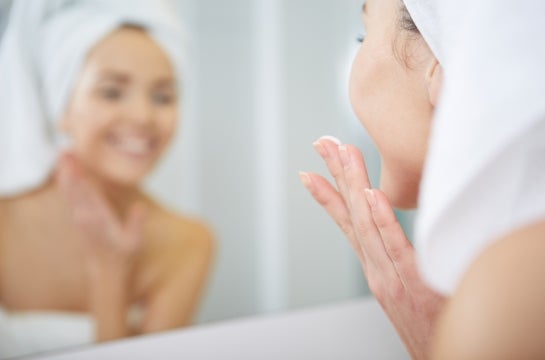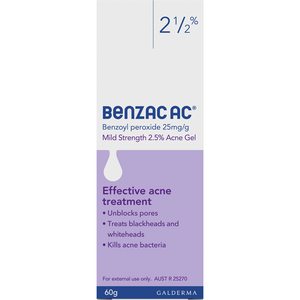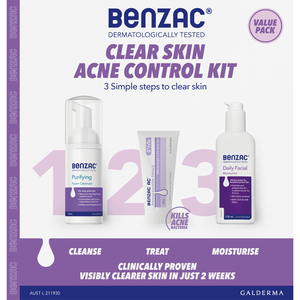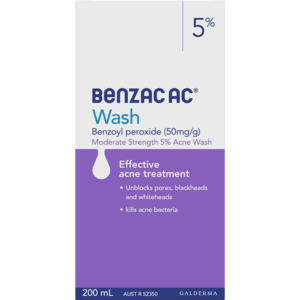Your guide to Benzoyl Peroxide for acne
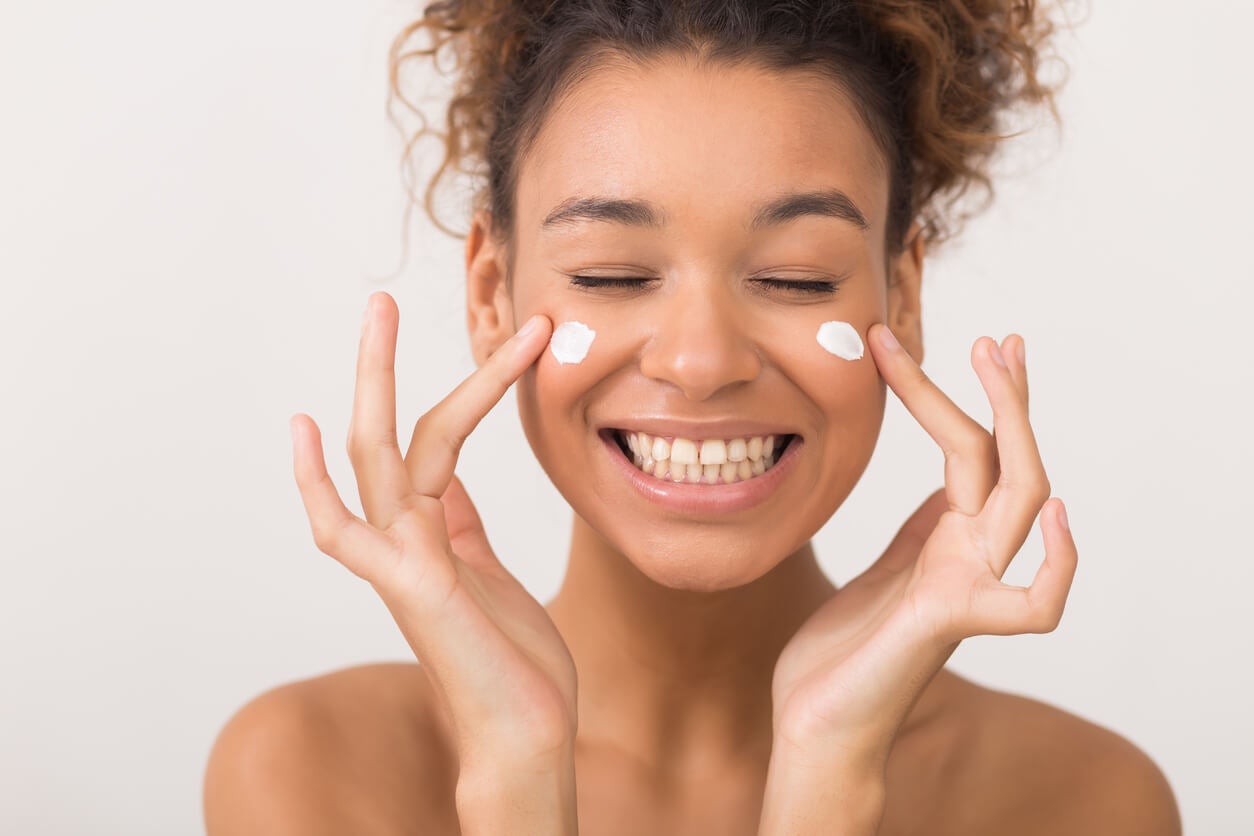
If you’ve ever looked for over-the-counter products to treat your acne, or perhaps for your teenage kids, then you may have been confused with all the different ingredients listed. We don’t blame you! With so many long and complex names, it can be hard to know what’s good, what’s bad, and what’s just there for show.
One ingredient you might have seen before is benzoyl peroxide. This is the key active ingredient in our acne treatment gels and wash. So, we want to clear up all the confusion around this ingredient and its use in acne treatment. Read on to learn everything you need to know about benzoyl peroxide.
What is benzoyl peroxide?
Benzoyl peroxide is an active ingredient that is used in a variety of different topical acne products and medications. It can be found in acne creams, gels, cleansers, and other types of skincare products. Benzoyl peroxide is used in both over-the-counter acne treatments and stronger prescription acne medications.
How can it help with acne?
The effects that benzoyl peroxide has on the skin makes it an effective tool when fighting mild acne, particularly for use on papules and pustules.
Its main feature is that it is antibacterial²,³. This means it makes your skin and pores less appealing places for acne-causing bacteria to grow. It does this by creating an oxygen-rich environment in which the bacteria can no longer thrive. So, it is effective at killing existing bacteria and making it more difficult for new bacteria to grow.
Benzoyl peroxide helps to clear the dead skin cells and other types of debris from inside your pores, effectively helping to unclog the pores. It also acts as an anti-inflammatory, which improves the appearance of acne breakouts by reducing swelling and redness around the pimples.
How to use benzoyl peroxide
Many people will apply topical benzoyl peroxide to their spots when they have them, and then stop once they have cleared up. But, since benzoyl peroxide is effective at preventing breakouts as well as clearing them up, it is better to use these products continuously. You should apply a thin layer of the solution over the affected area once or twice a day. Make sure to clean and dry your face before applying.
Over-the-counter products for mild acne are available in strengths of 2.5, 5, or 10 percent benzoyl peroxide. If you have never used these products on your skin, it is better to select a 2.5% cream or gel to start with. This will introduce your skin to the ingredient more gently and make any side effects less likely to occur.
Does it have any side effects?
There are some potential side effects when applying benzoyl peroxide to your skin, which is why it’s better to start at a lower concentration initially – 2.5% is recommended as the introductory strength. Most people will be able to use this treatment comfortably, although those with sensitive skin are more likely to react badly to it so patch testing is always recommended. Try using topical benzoyl peroxide once every other day to start with and see if you experience any of the following side effects:
• Dry skin
• Redness
• Itchiness
• Peeling skin
• Allergic reactions
Your skin is likely to become more accustomed to benzoyl peroxide over time. So, if you experience mild side effects to begin with, try reducing the frequency a little to allow your skin to get used to the active ingredient whilst keeping your treatment going. Then after seven days you can increase to daily use and then finally using your treatment morning and night. If the sensitivities continue, you may want to discontinue use or consult your health professional if the side effects are causing discomfort or pain.
Benzoyl peroxide is only meant for the skin, so make sure you keep it away from your eyes and mouth. You should also keep it away from your hair, clothing and other fabric items like your towels and pillow cases as it can bleach these. Let any applied cream or gel dry properly before getting into bed or putting clothes over the area.
Take a look at our range of acne treatments containing the bacteria-fighting benzoyl peroxide. Try it for yourself to find out how effective it can be in fighting teen or adult acne.





